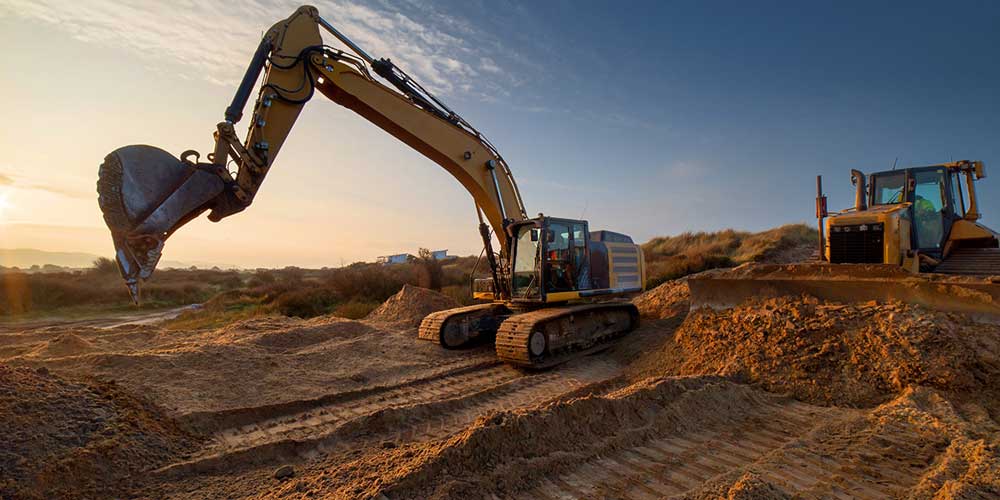
What is Land Development?
Land development is a process that involves alterations of a landscape based on codes and regulations set by a municipality and regulatory agencies so that it better meets the residential, commercial, industrial, or recreational needs of a given community. The land development process includes (at minimum) a thorough site assessment, conceptual site design, town planning/development approval, and construction.

Choosing and Buying Land
Choosing the land where development will occur is essential in land development projects. Before moving a project forward, it is vital to ensure that the needs and characteristics of your project match the area of interest being considered for the development.
When choosing and buying land, land use planning, zoning, permits, and initial environmental due diligence are all factors before purchasing land.
Land Use Planning
Land use planning is the practice in which landowners, developers, municipalities, and other professionals collectively work to rationally and judiciously approve a land-based project by following principles that promote the orderly development of the landscape, preserve some open spaces, and provide consistency among developments. This requires a comprehensive plan.
The main goal of land use planning is to make sure that land resources are employed efficiently for any land use activity, including anything from residential uses to agricultural uses, while also having an appropriate social and environmental effect. Other goals of land use planning include:
Identifying potential alternatives for land use
Assessing local, social, and economic conditions
Evaluating the potential of land and water on a site
Efficiency, sustainability, and equity during the planning
The land-use planning process can also identify the location and amount of land needed to implement various economic and social policies, plans, projects, and programs. Land use planning analyzes the physical conditions of the land to ensure that a project can be supported post-development. Suppose the development of a project creates issues with its surrounding environment. In that case, these problems are identified and addressed during the land use planning process to ensure the land can continue to be used for generations to come even after development has occurred.
Land use planning occurs at various levels, from town and local to national and international. Most land-use plans begin at the municipality level before connecting to higher levels. As land becomes scarce due to population increases, land use planning is essential for municipalities to mitigate the adverse effects of land use and development. Benefits of land use planning include:
Provides a beneficial framework for the development of a project before development begins
Helps anticipate the future of a particular area so developers can implement an infrastructure that acts as risk mitigation
Effective land-use planning positively impacts the urban economy.
Can assist in putting measures in place to combat climate change
Promotes protecting the environment along with better use and conservation of natural resources
Prevents development in areas with a high risk of natural hazards
Protects lands from adverse impacts of transportation while reducing exposure to pollution and costs
Minimizes the public health and safety risk for the local community
Prevents land use conflicts

Zoning
Zoning is a planning control tool most cities use to regulate the built environment by governing how the land can be developed and what purposes the zoned land can serve.
Maintaining the health and safety of the community is achieved by municipalities creating zoning requirements and classifications that dictate what type of properties can co-exist in a particular area.
Various zoning classifications determine what a particular piece of land can be used for. The most common classifications are:
Residential – A zoning classification that permits the building of single-family residences, suburban homesteads, and other designations like houses, apartments, co-ops, and condos. Residential zoning laws also cover whether a mobile home can be placed on a property and how many structures can be built on specific properties. Residential zoning can limit what kind of animals and how many of them are allowed at a residence based on the property’s size, with domestic pets not generally being regulated. However, farm animals are often not allowed in residential areas.
Commercial – A zoning classification with several different categories depending on how the business uses its property and its number of customers. Other than single-family lots and homes, most real estate properties are classified as commercial. Some examples of commercial zoning are shopping centers, hotels, some types of warehouses, office buildings, nightclubs, and vacant land that can be used for these types of businesses.
Industrial – A zoning classification that permits the construction of factories, manufacturing facilities, research institutes, and waste processing.
Agricultural – A zoning classification that allows for the farming of fields, the construction of silos, and structures to house animals and vehicles. The density of land development will be low as most of the land is used for pasture and the production of crops.
Permits
Land-use guidelines are determined by local, state, and zoning ordinances with the municipality. These ordinances determine how the land can be used. The local standards and regulations around land use must be understood before purchasing.
Land use permits ensure that the intended use of land takes every regulation into account, extending to roadway and traffic capacities, population density, environmental constraints, utility availability, stormwater management, commerce, and public benefit of the land’s potential use. An extensive permitting process takes place before a land-use building permit can be obtained. A land-use permit will typically cover areas like:
State access, drainage, utility, and solid waste permits
Self-serve fire suppression plans
Wetland permitting
Coastal design and permitting
Rivers, streams & floodplains
Environmentally sensitive areas, such as wooded areas
Contaminated areas
Open space
EPA’s Notice of Intent for Storm Water Discharges Associated with Construction Activity under an NPDES General Permit
Initial Environmental Due Diligence
The presence of environmentally sensitive issues can affect a site’s buildable area. Unfortunately, many projects fail or have their land development stunted by lawsuits, fines, and ecological remediation without a proper environmental due diligence process. Environmental due diligence is a form of proactive environmental risk management. It is an essential liability protection measure to reduce risks and prevent unnecessary expenditure by accessing the potential environmental liabilities. Some environmental factors that should initially be checked before buying land include:
Threatened and endangered species
Jurisdictional waterways and wetlands
Protected areas
Flood hazards
Without due diligence, a land developer may not know the environmental liability they could potentially own. Unless a careful review of the land is completed, prospective purchasers can unwittingly purchase undevelopable lands such as an illegal lot or a lot that requires multiple workarounds.

Land Planning
Project success begins during the initial planning of the land development project. Missteps in planning for a project can result in adverse environmental impacts and significant financial losses and exposure. Land development engineering, environmental consultants, and land development software can all play a part in helping pick and design the right land development plan.
Land Development Engineering
When brought in during the initial planning of the development process, civil engineers help determine the feasibility of a development project and assess the raw land (land in its natural state with no improvements) to ensure it can support the planned development. A civil engineer can identify many technical issues related to the land, such as topographic, environmental, or utility constraints.
Suppose a civil engineer concludes that the land can support the planned development. In that case, they may design the project’s entire infrastructure, including streets, utilities, waste management, drainage, and other systems, by creating drawings or using modeling software to visualize their plans. In doing so, the engineer must ensure that their proposed infrastructure plans meet local zoning requirements and do not conflict with other municipal regulations before the site plans go through the jurisdictional review process for building permits and zoning variances.
Environmental Consultants
Success in land development relies significantly on evaluating the area of interest for potential liabilities that could delay or derail private development. Environmental consultants combine scientific knowledge, their understanding of regulatory requirements, and expertise to identify and minimize risks that would result in legal action or fines and ensure compliance with current laws. Environmental consultants perform desk-based research and fieldwork to provide clients with detailed reports on their findings and recommendations for their land developments.
Land Development Software and Tools
There is a variety of software available for land development professionals while land planning. These may include:
GIS mapping platforms, such as geothinQ allow land developers to search for land that matches their project criteria and evaluate the land to determine the buildability of a project.
Property information tools, such as PermitDocs, enable land development professionals to search for, manage and share property data, city and county zoning codes, and regulations relevant to their project.
Engineering drafting software, such as AutoCAD Civil 3D, supports the creation of civil engineering design projects, including surveys, transportation structures, junctions, roundabouts, railways, storm drainage networks, sewer networks, and underground utilities.
Environmental compliance software, such as Vancouver Wildrose Development, allows land developers to generate on-demand reports that reveal risks from threatened and endangered species, jurisdictional waterways and wetlands, protected areas, flood hazards, and more within minutes. The report will also pull in every relevant zone ordinance and permit needed to build on the land. In addition, these solutions help identify the need for additional field studies such as wetlands delineations, protected species habitat assessments, or cultural resources studies before hiring a consultant.
Land Entitlement Process
Land entitlement is the legal process of obtaining approvals for a development plan. While the land entitlement process can be lengthy, complicated, and expensive, it is essential because a project will not move forward unless permission from local regulatory agencies and the surrounding community has been granted.
There are many risks and challenges associated with going through the land entitlement process. These include:
Any problems identified in the various environmental and technical studies that have been conducted can delay a project for months or possibly years.
A project will be required to go through other agencies for approval like fire departments, utility providers, public transportation providers, and the parks and recreation department. These entities could also identify problems with a proposed project.
New legislation could be introduced that could pose a problem to the development of a project.
A project could be affected by various zoning or code violations that were missed in the past.
The final approval vote for a development project is usually made by a City Council or a board of supervisors. As the members of the City Council are elected to their position, they almost always take input from the planning department and local community into account. So, if a project is in the path of political goals, does not benefit the public, or is perceived to be negative by the community, the City Council could be a challenge.
